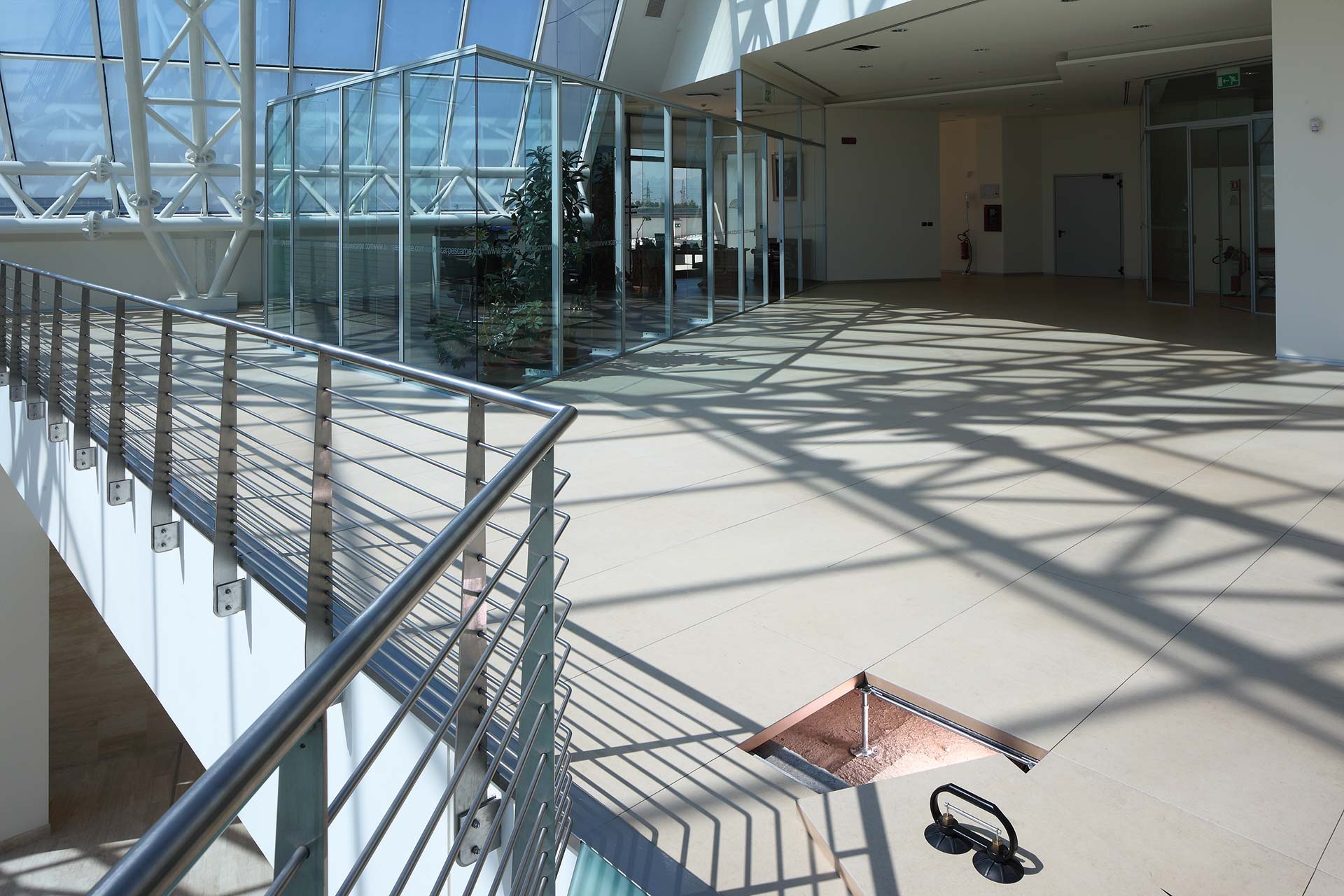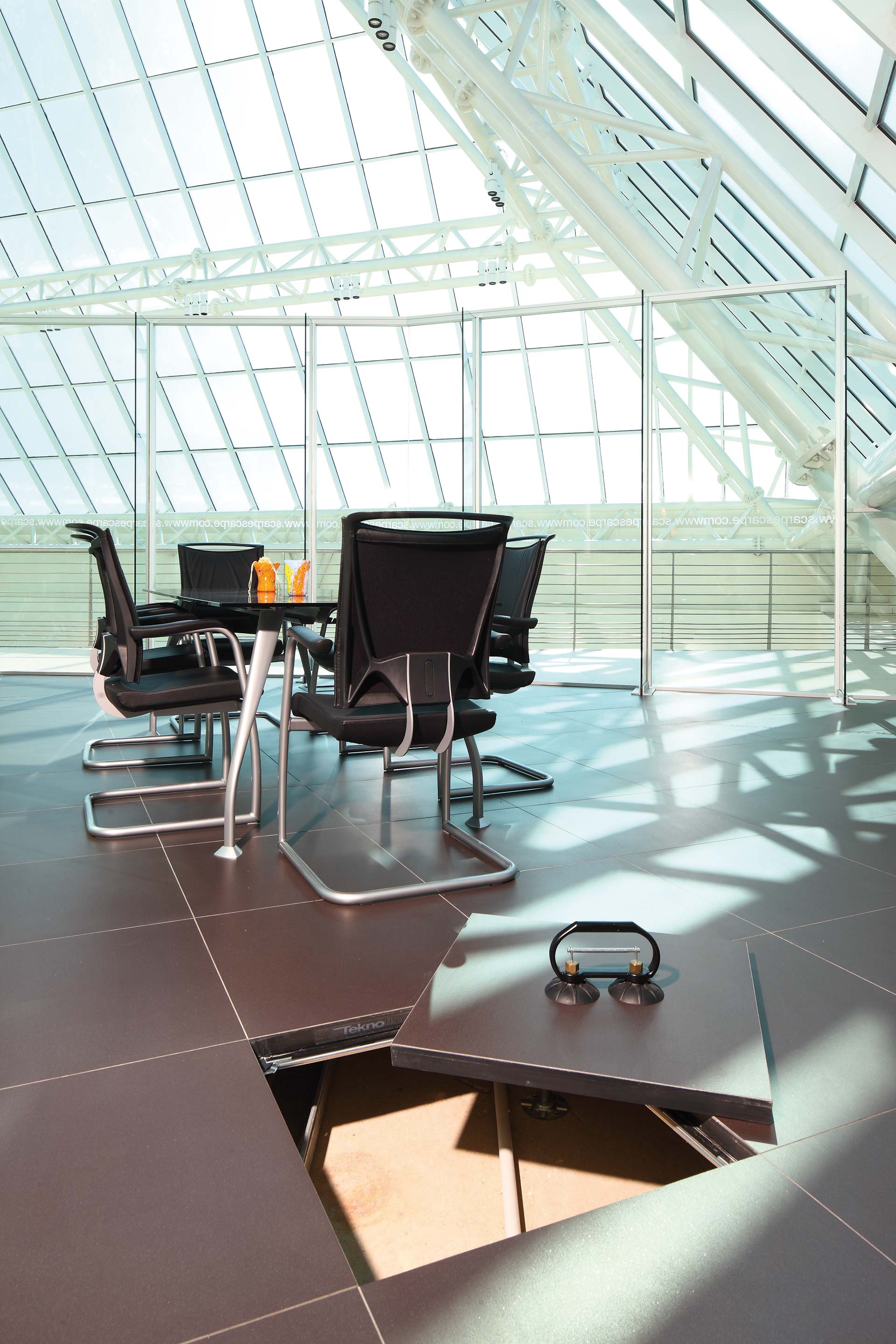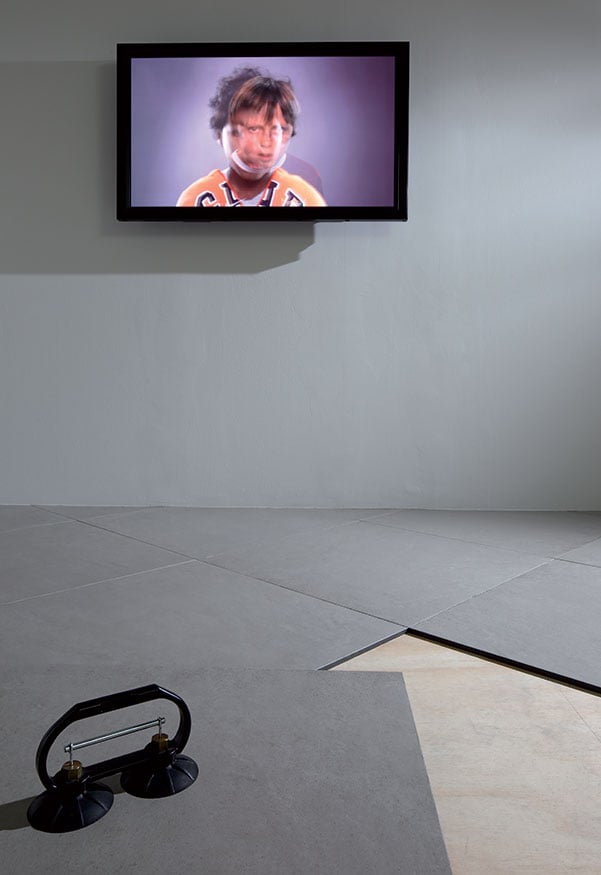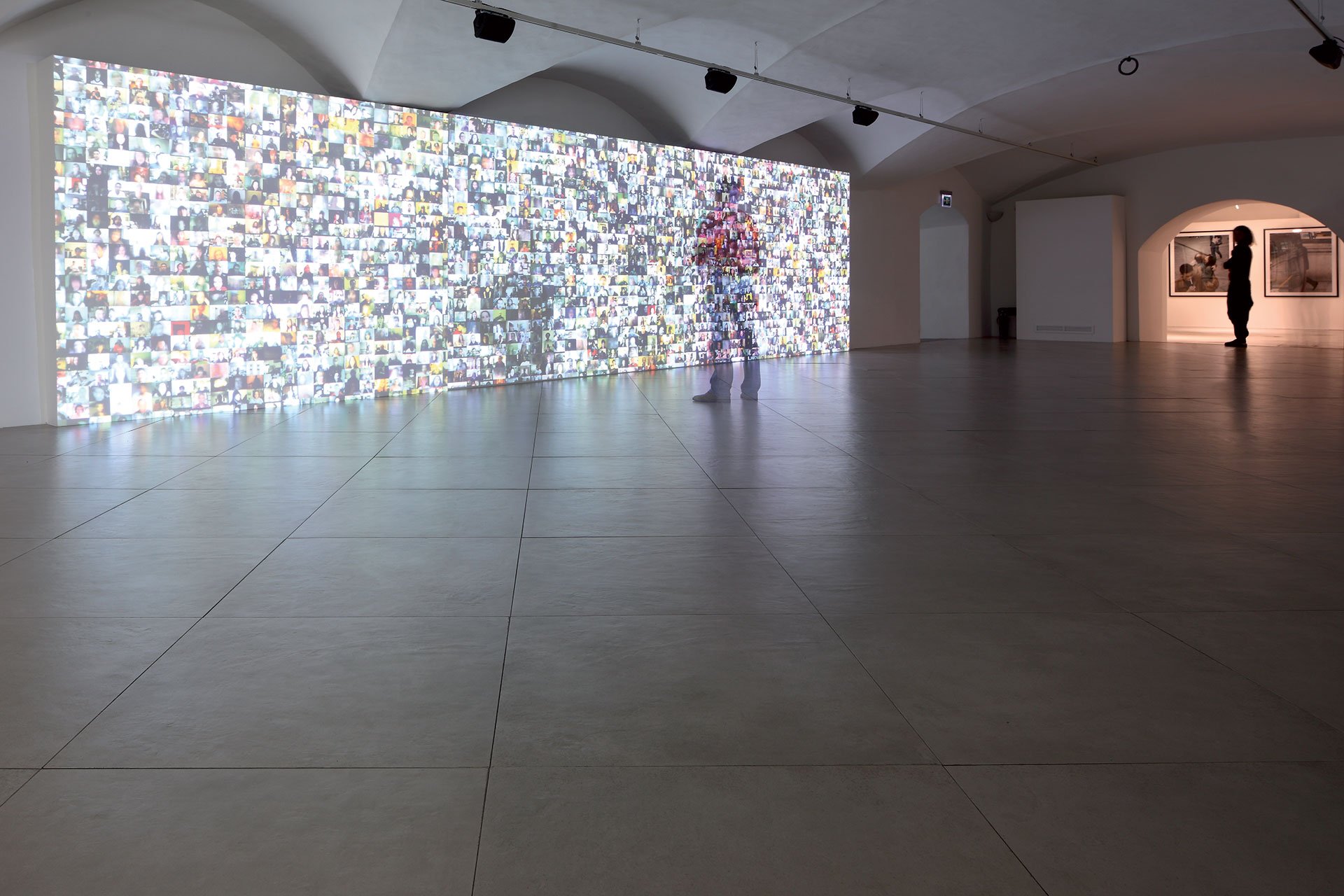Flexibility and adptability for the most modern indoor environment
Technical indoor floors have been developed to meet the needs of the most modern indoor environments that require flexibility and adaptability without sacrificing the technical and aesthetic characteristics of porcelain stoneware. Thanks to their versatility, these solutions allow the arrangement of the environments to be changed, allowing maintenance and re-utilization. Types of technical indoor floors:
Traditional raised floor
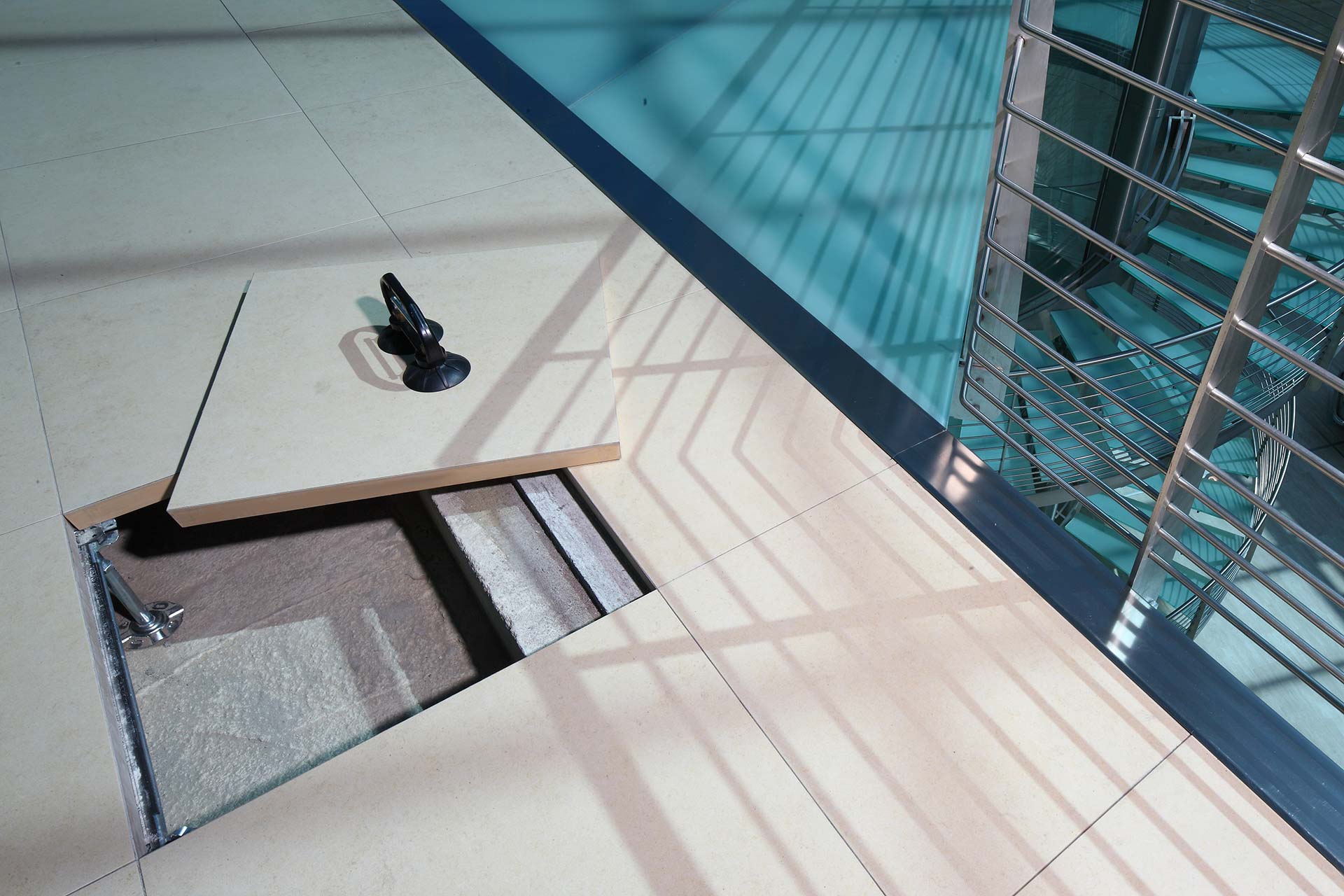
A suspended flooring system where the walking area rests on a raised structure. Between the bottom and the floor, an accessible technical compartment is created to house the utilities.
Between the bottom and the floor, a technical compartment is created to house the utilities. The modules that make up the flooring rest on the foundation, allowing them to be removed very easily and allowing access to the underlying area.
Advantages
This system provides advantages such as:
- Flexibility managing the utilities that run freely under the flooring.
- Practical maintenance operations thanks to access to the utilities.
- Possibility of re-utilization. The dry installation without the use of glue allows the individual panels or the entire floor to be moved to different areas than the initial ones.
- Adaptability: the raised floor can also be placed on a pre-existing floor.
Components
The elements that make up the Florim raised floor are the panel and the support structure.
- The panel is the result of gluing a porcelain tile onto a 3-4 cm support that represents the treadable surface and guarantees aesthetic quality along with excellent characteristics of ease of cleaning, impermeability and resistance over time.
- The structure is instead created with the use of stainless steel transoms and feet. The utility connections to the rooms are achieved through openings such as turrets or air vents.
Additional information
The upper covering is in porcelain stoneware, available without limits of use or finishes or surfaces based on the various aesthetic and design needs. The porcelain stoneware is assembled to the structural core and the coupled material is ground and processed to achieve a slight countersink that is useful for facilitating installation and movement of the flooring.
The support core can be made up of two different types of material: wood particleboard or calcium sulphate.
- The wood particleboard support allows a finished panel thickness of 48 mm to be obtained, recommended for medium loads that stands out for its affordability. Good mechanical and fire resistance.
- The calcium sulphate support allows a finished panel thickness of 40 mm to be obtained. It guarantees better resistance to humidity and fire. It adds excellent sound absorption quality to high mechanical resistance.
The bearing structure, placed on top of the slab, is a steel frame structure supported by circular feet that are height-adjustable from 3-4 cm up to more than a meter and connection transoms which are also in steel. The top of the feet and the transoms is edged with anti-static rubber to absorb vibrations and noise.
Loose-lay raised floor
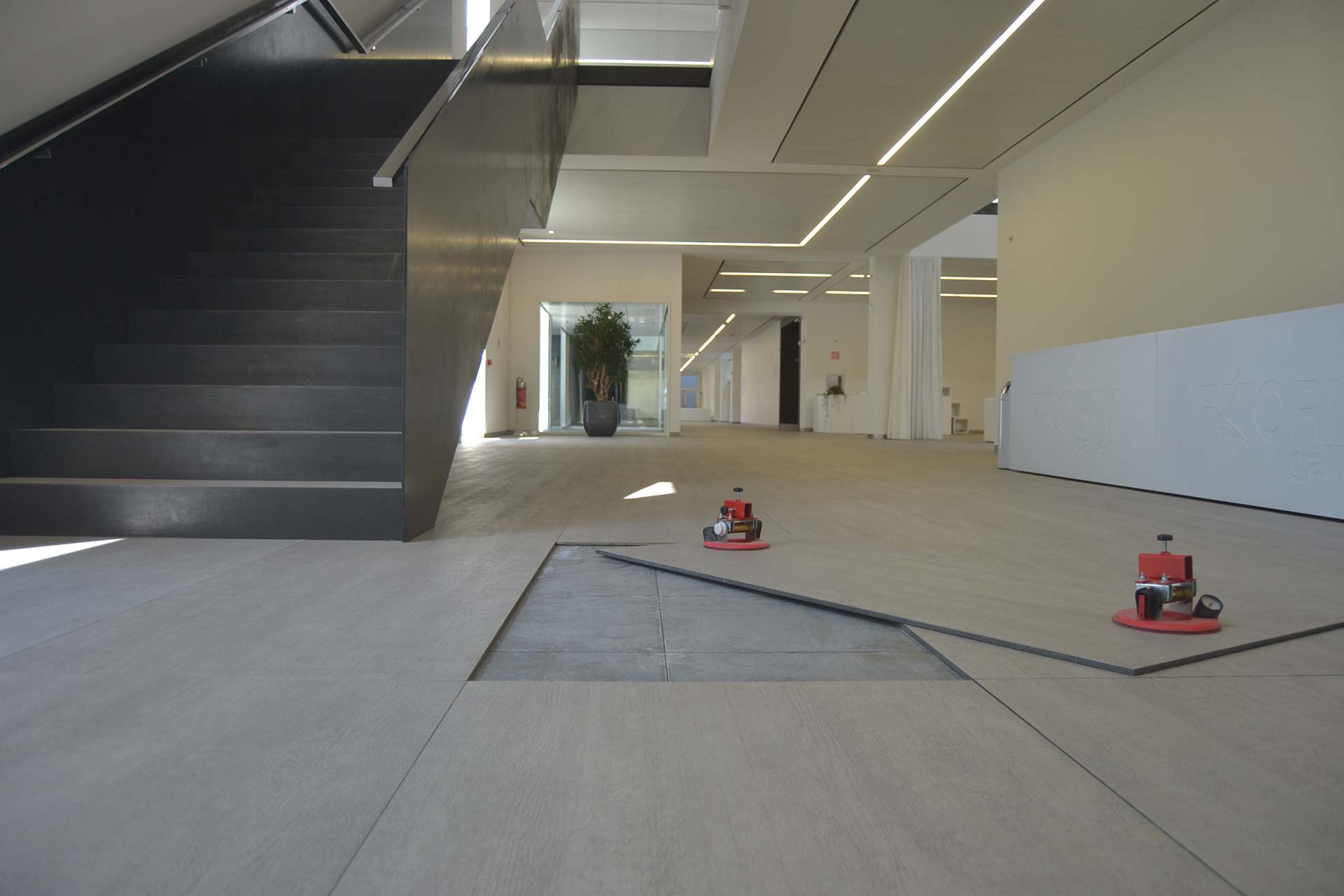
Represents the combination of the practical maintenance of raised floors with flexibility of application.
Used with the need to make the ceramic product independent from the support, it allows greater flexibility of changes and integration over time than traditional raised floors. Used with the need to make the ceramic product independent from the support, it allows greater flexibility of changes and integration over time than traditional raised floors.
Advantages
The system provides advantages such as:
- Easier installation
- Interchangeability of the ceramic product
- Simple and quick replacement of the flooring
- Possibility of using various sizes
Components
The system is made up of a porcelain stoneware sheet to which a support is applied made up of a special, 2 mm thick, high-density blend of recycled rubber and cork. In addition to performing a sound absorption function, the rubber increases the grip of the sheet on the underlying structure. Below the stoneware sheet, there is a support made up of a calcium sulphate or particleboard panel encapsulated in two aluminum cores. This is installed and fixed to the underlying aluminum foot.
Loose-lay flooring
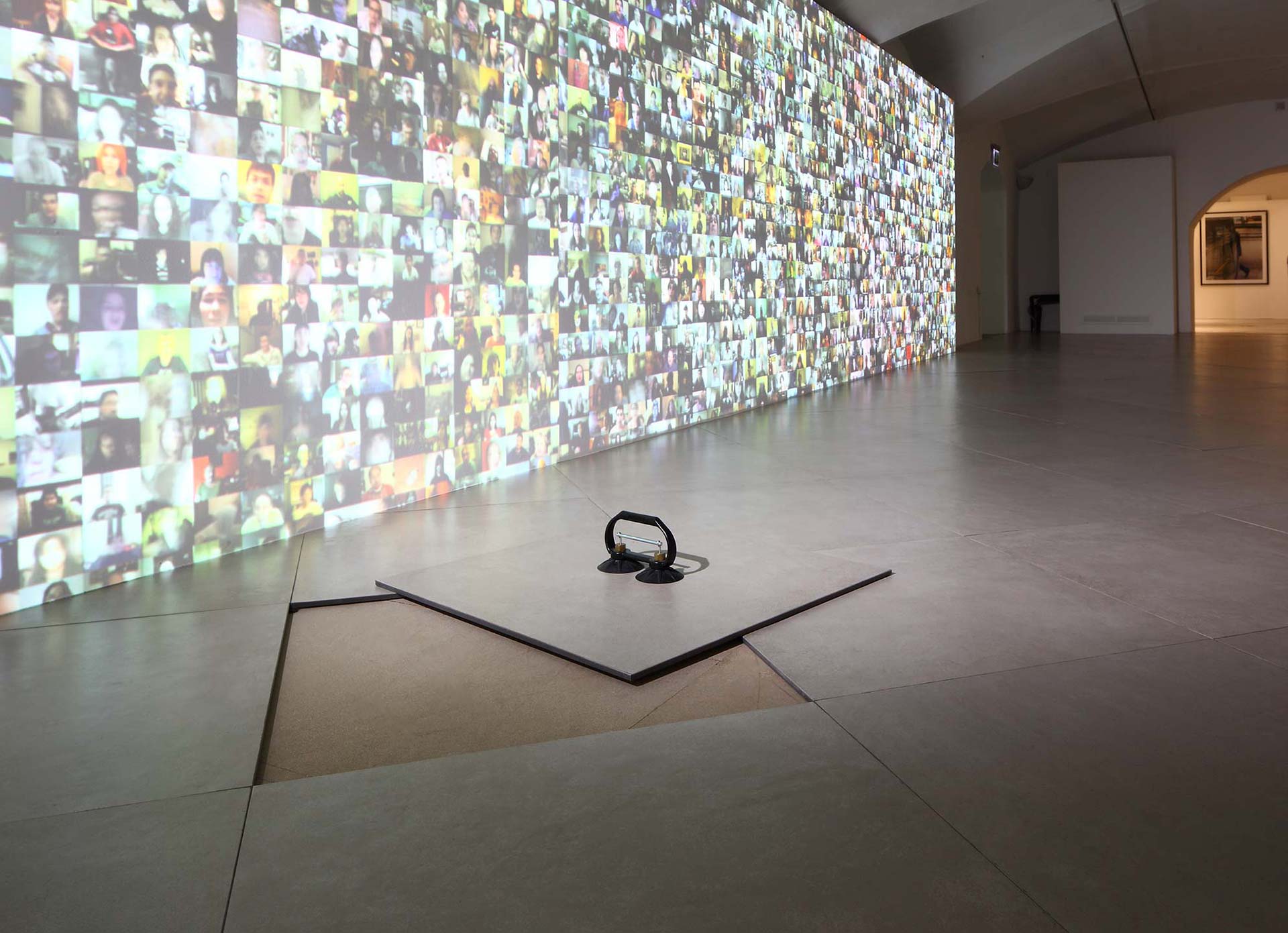
Designed to renew the aesthetics of the environments through the installation of new ceramic flooring directly on top of a pre-existing floor, this solution requires neither a bed, nor the use of glues or plasters. Installed simply by being placed, the sheets are positioned and removed without any masonry or demolition work and without the need for specialized labor.
Advantages
- Immediacy: treadable right away because it does not require the use of glues, plasters and waiting times after installation.
- Versatility: the system is available in all the Florim collections, finishes, sizes and surfaces.
- Practicality: easy and quick to install, it allows significant cost and labor savings and can be “do-it-yourself” installed. Ideal for the retail world and temporary use.
- Possibility of re-utilization: The dry installation without the use of glue allows the individual sheets or the entire floor to be moved to different areas than the initial ones. The underlying floor is not damaged, making it ideal for historic buildings or situations that are restricted by particular standards and/or regulations.
Components
The system is made up of a porcelain stoneware sheet combined with a support made up of a special, 2 mm thick, high-density blend of recycled rubber and cork. In addition to performing a sound absorption function, the rubber increases the grip of the sheet on the foundation. The thickness also allows slight defects in the underlying surface to be absorbed. A PVC edge, jointly chamfered to the sheet, protects the ceramic slab during installation, acting as a laying system joint.
